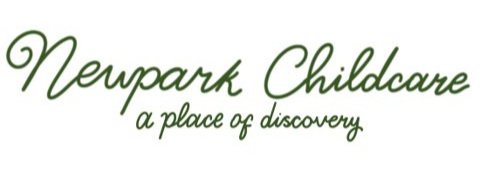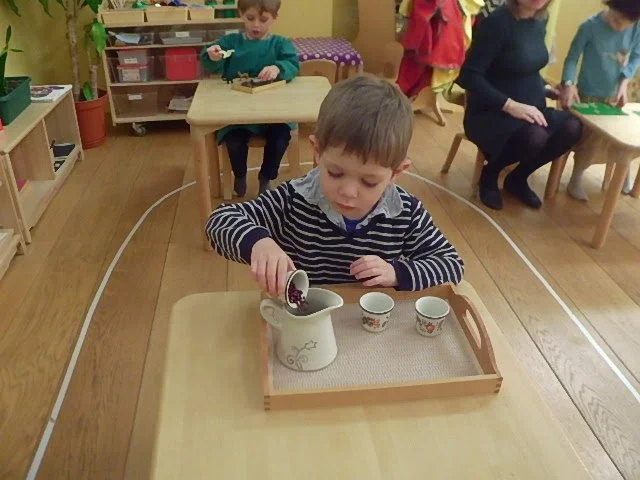Mathematics
Mathematical and number concepts are an essential part of everyday life. Even before starting school, young children are exposed to numbers and mathematical concepts daily e.g. sorting, counting, estimating quantity, measuring, through books, when shopping and through many infant toys as well as in our daily activities; for example, setting the table or putting on shoes develops the idea of one-to-one correspondence because there must be a place for each person, or a shoe for each foot. Packing away clothes or shopping is an exercise in classification and sorting and helping with baking gives the young child experience in measurement and estimation as well as the experience of working with volumes or mass in different types of media, for example during a cooking activity or when making bread.
The Montessori Maths programme addresses three separate concepts: number, quantity and the relationship between the two. The child uses concrete materials that isolate each concept then is shown how to label a quantity with the appropriate numerical symbol. The child then advances to a progression of sequential materials that combine number and quantity.
Counting is often introduced directly in books for young children or number rhymes and games. Maria Montessori referred to the part of the mind which deals with order and abstraction that is precisely and logically constructed as “the mathematical mind”. This part of the mind is vitally important, as it allows the child to order and thus understand his world.
The Sensorial and Practical life areas of the classroom prepare the child for Maths and Language. The foundation for geometry is developed through the Sensorial materials; for instance, some of the materials are graded by size. Children experience spatial relationships when working with materials such as the Pink Tower, Brown Stair, Red Rods, Constructive Triangles, the two main types of Graded Cylinders, Plane Shapes and Geometric Solids. Sensorial activities also indirectly prepare for base ten counting; e.g. the Pink Tower has ten graded cubes, increasing in size by 1 cm.; the Brown Stair has ten graded square prisms, each 1 cm larger than the last; the ten Red Rods are graded from 10 cm to 100 cm in length.
The Plane Shapes and Geometric Solids are the basis for assessing volume and surface area. The Binomial and Trinomial cubes are all geometric representations of algebraic equations used in higher Maths. Squares and cubes pave the way for the Golden Beads where the child experiences the concept of one hundred beads joined to make a square and a thousand beads joined to make a cube as an introduction to thousands, hundreds, tens and units.
After children have become familiar with the quantities and corresponding numbers of one to ten, they progress to teens then focus on numbers up to one hundred. Then the child is ready for the Golden Beads which are used for large number recognition over one hundred. Golden beads are all the same size; a single bead represents one unit; ten beads strung on a wire make a ten bar; one hundred is a square made up of ten ten-bars side by side and one thousand beads are ten one hundred squares stacked on top of each other to form a cube. Golden beads are also used for basic arithmetic functions of addition, subtraction, multiplication, and division. Children enjoy working with large numbers and compute easily with hundreds and thousands using Golden Beads and corresponding numeral cards.







